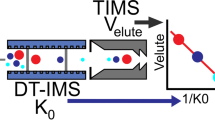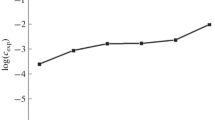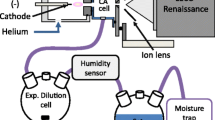Abstract
Thorium and iodine memory effects have been characterized experimentally for inductively-coupled plasma mass spectrometry by adding ammonia gas directly to the spray chamber and nebulizing aqueous ammonia sample solutions to assess analyte memory retention sites. Thorium memory effect originates from the tendency of an unidentified thorium compound to volatilize from the spray-chamber walls, and not from Th compound adsorption to nebulizer tubing. The mass spectrometer skimmer and sampler cones, ion optics, quadrupole, and other components are not responsible for the memory effect. Unlike that of thorium the iodine memory effect originates from adsorption of iodine compounds on nebulizer tubing surfaces and from volatilization of HI and I2 from the spray-chamber walls. Addition of ammonia sample solutions or ammonia gas directly to the spray chamber eliminated the Th and I memory effects in practical analyses, and blank levels were achieved after 2 min wash-outs. Quantitative recoveries were obtained for Th and I in reference materials.
Similar content being viewed by others
Author information
Authors and Affiliations
Additional information
Received: 27 February 2001 / Revised: 10 March 2001 / Accepted: 13 March 2001
Rights and permissions
About this article
Cite this article
Al-Ammar, A., Reitznerová, E. & Barnes, R. Thorium and iodine memory effects in inductively-coupled plasma mass spectrometry. Fresenius J Anal Chem 370, 479–482 (2001). https://doi.org/10.1007/s002160100837
Published:
Issue Date:
DOI: https://doi.org/10.1007/s002160100837




